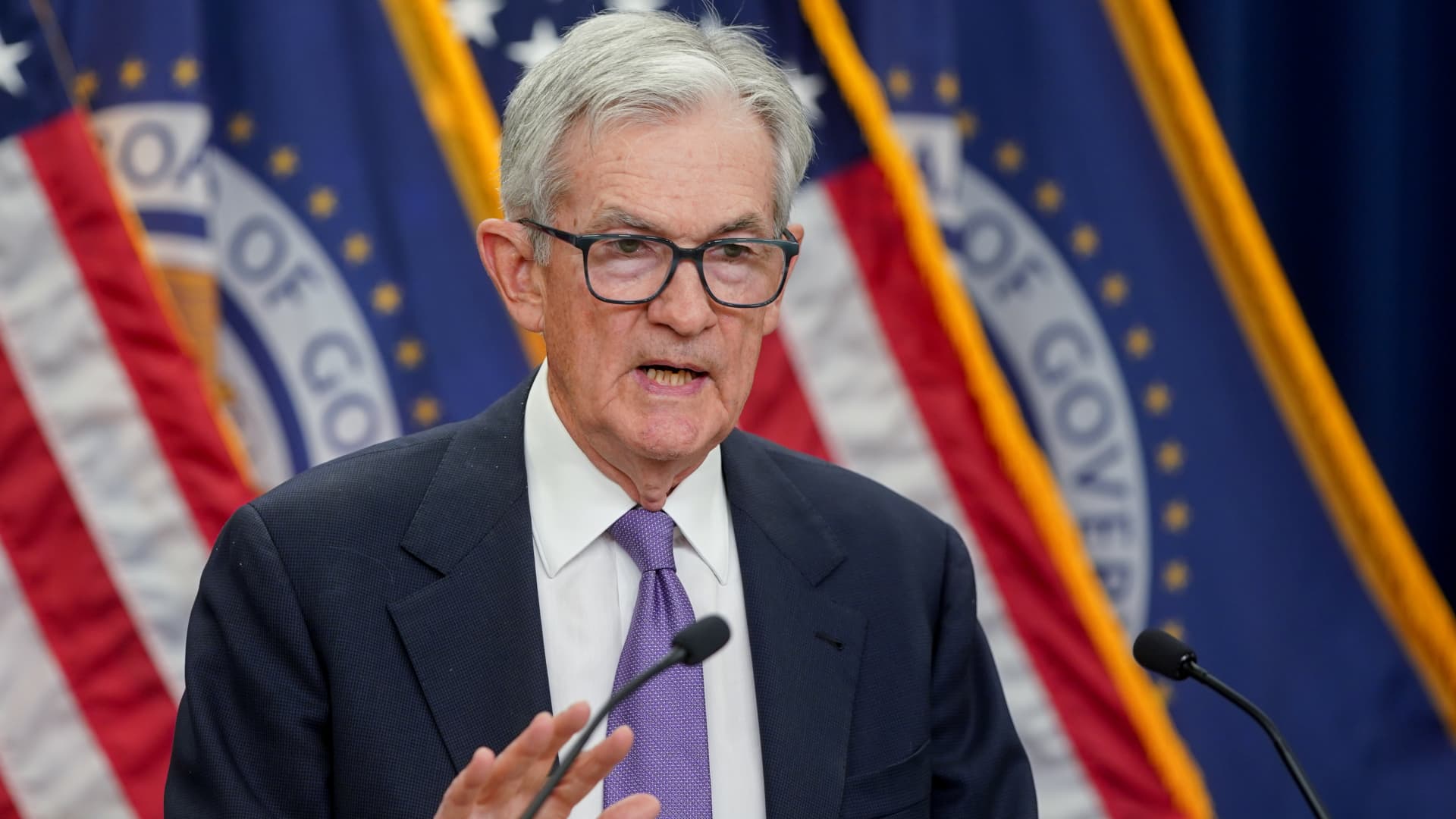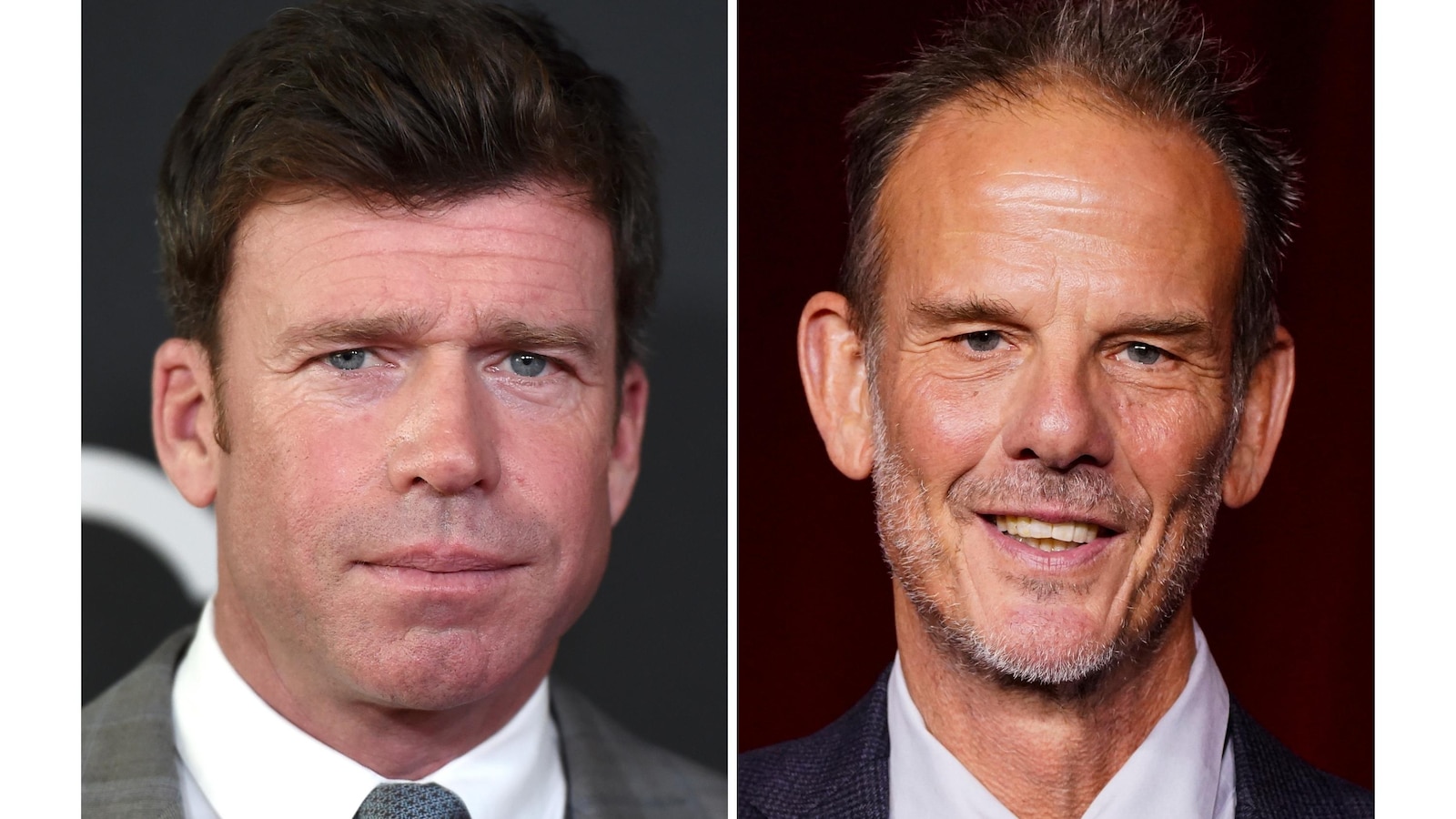Jerome Powell, chairman of the US Federal Reserve, during a news conference following a Federal Open Market Committee (FOMC) meeting in Washington, DC, US, on Wednesday, Oct. 29, 2025.
Al Drago | Bloomberg | Getty Images
Federal Reserve Chair Jerome Powell faces if not the most difficult challenge of his time in office at least the trickiest in his final months as head of the all-powerful U.S. central bank.
Fresh off his surprisingly tough talk Wednesday on the potential for another interest rate cut in December, Powell will have to steer his way through a suddenly contentious atmosphere among policymakers that will make whichever direction the Fed chooses divisive.
While it’s not the existential economic threat posed by the Covid pandemic in 2020, it nevertheless indicates a level of peril uncommon for the institution.
“December could get messy,” Bank of America economist Aditya Bhave said in a client note. “We still think the Fed won’t cut rates again under Chair Powell. But barring a clear signal in either direction from the data, the December decision will likely be even more contentious than October.”
The Fed on Wednesday approved a widely anticipated quarter percentage point rate reduction that took its benchmark rate down to 3.75%-4%. However, Powell warned that another cut in December “is not a foregone conclusion,” something the market was not expecting.
While Wall Street economists and strategists were split over whether the committee will in fact approve another reduction at the Dec. 9-10 meeting, they were in agreement that this is a pivotal moment for Powell and the legacy he ultimately will leave when his term runs out in May.
“Even in a situation without much additional data due to the shutdown, it can actually make sense to push against market pricing to keep optionality going forward,” wrote Michael Gapen, chief U.S. economist at Morgan Stanley. “A 95% probability assigned to a December cut does not seem consistent with a data-dependent Fed.”
Markets react
For their part, traders weren’t buying the hawkish rhetoric. Fed fund futures pricing Thursday still indicated a 75% probability of a cut in December, though that was down from around 90% the day before, according to the CME Group’s FedWatch.
But Powell went to great lengths in his post-meeting news conference Wednesday to dispel the notion that the reduction, which would be the third since September, is a slam dunk.
The thrust of his argument was multi-pronged: What data there is available during the government shutdown blackout has largely showed a stable economy though the labor market is a risk; inflation is still above target; and, in an unusual development, there are “strongly differing” views on the FOMC for where policy should move.
Markets were clearly caught off guard by the move, with stocks slipping and Treasury yields surging. The 10-year Treasury yield was solidly above 4% Thursday while the policy-sensitive 2-year note climbed over 3.6% to its highest level in about a month.
“The reaction of the bond market should certainly give Fed officials pause,” wrote Ed Yardeni, head of Yardeni Research and coiner of the term “bond vigilantes” to describe buyers’ strikes in the fixed income markets. “The bond market isn’t buying the Fed’s cover story that interest rates were too restrictive.”
For Powell, the statement regarding December was an unusual step considering markets had been expecting a more neutral tone. Asked whether he was bothered by the strong anticipation of another cut, Powell said markets should take his statement that a reduction “is not a foregone conclusion” should be “taken on board.”
“You’ve got get right in front of that, because you don’t want to surprise the market a couple weeks down the road. Now is the time to do it,” said Dan North, senior economist for North America at Allianz Trade. “He doesn’t usually use words quite so forcefully. So that was interesting, and he’s clearly trying to squash speculation about December. We feel the same way, December is going to be a pause.”
Political overhang
The developments come at a ticklish time for the Fed.
Powell, a favorite target for President Donald Trump’s criticism, has only seven months or so left in his term. Treasury Secretary Scott Bessent has been busy interviewing potential successors — among them current Governors Christopher Waller and Michelle Bowman, both of whom voted in favor of the cut.
In addition, Governor Stephen Miran, a hand-picked Trump appointee who will only serve through January, again dissented from the vote in favor of a half-point.
At the other end of the spectrum, Kansas City Fed President Jeffrey Schmid voted “no” as well, but because he wanted to not cut. Between them run a range of views on the normally consensus-driven FOMC.
Whether Powell’s tip of the hat to the doves reflects merely a courtesy or deeper misgivings about cuts will be central to Fed analysis in the coming weeks.
“While the press conference played out somewhat differently than we expected, we have not changed our Fed forecast and continue to see a December cut as quite likely,” Goldman Sachs economist David Mericle wrote. “We suspect that there is substantial opposition on the FOMC to the risk management cuts and that Powell thought it was important to voice other participants’ concerns today in his press conference. But we still think that the arguments for a December cut remain intact.”






